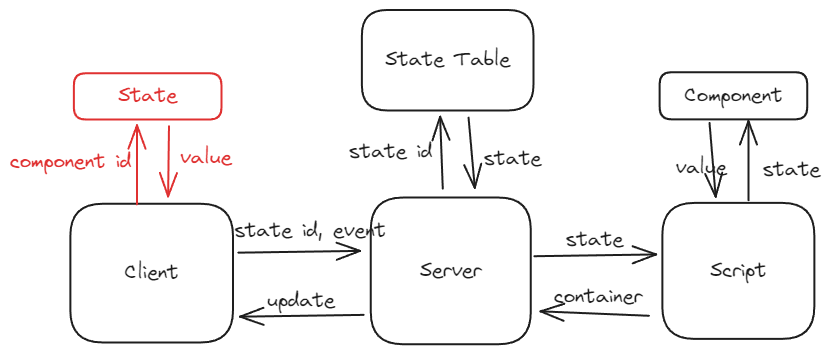
有了 Button 的實作,對於 Textbox 也可以清楚的實作了。
不過,在和 Button 不同的是,我們在 client 端會需要維護一個 state,負責把 component id map 到使用者輸入的資料。
// global
var state = {}
newTextbox.onchange = function(e) {
state[e.target.id] = e.target.value
}
當使用者完成在文字輸入框中的輸入並移開焦點時,會觸發畫面更新機制。
newTextbox.onblur = function(e) {
rerun({
type: 'input',
id: e.target.id,
value: e.target.value,
})
}
所以 createTextbox會這樣寫:
var state = {}
function createTextbox(comp) {
// ... (其他 DOM 元素的程式碼)
const newTextbox = document.createElement('input')
newTextbox.id = comp.id
newTextbox.className = 'input'
newTextbox.type = 'text'
newTextbox.value = state[comp.id] || ''
newTextbox.onblur = function(e) {
rerun({
type: 'input',
id: e.target.id,
value: e.target.value,
})
}
newTextbox.onchange = function(e) {
state[e.target.id] = e.target.value
}
ctrld.appendChild(newTextbox)
return fd
}
由於在實作 Button 時 Server 邏輯已經補好了,所以這裡只要追加 component:
type Textbox struct {
Type string `json:"type"`
ID string `json:"id"`
Label string `json:"label"`
}
func newTextbox(label string) *Textbox {
return &Textbox{
Type: "textbox",
ID: label,
Label: label,
}
}
func Textbox(state *tgstate.State, c *Container, label string) string {
textbox := newTextbox(label)
c.Comps = append(c.Comps, textbox)
return state.GetString(textbox.ID)
}
在 script function 就可以這樣使用:
name := tg.Textbox(state, root, "What's your name")
tg.Text(root, "Hi "+name)
